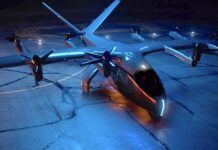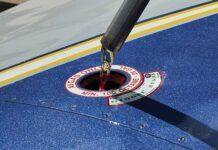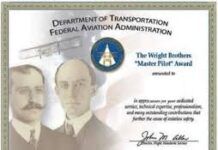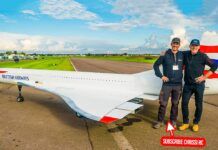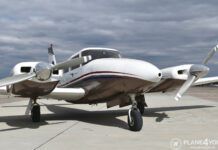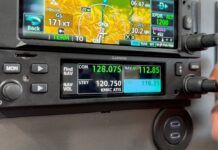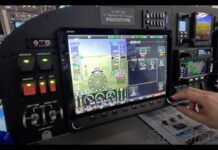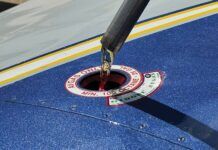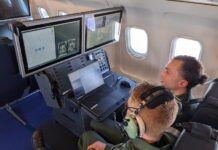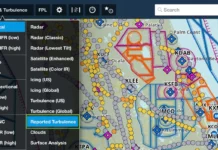
With its advanced systems, modern ergonomics and luxurious-yet sporty-cabin design, it may be easy to sell pilots on the Cirrus SR22s capabilities. But it might also be an easy aircraft to sell to paying passengers. You might assume that commercial travelers accustomed to larger jet aircraft might view the Cirrus as another one of those little airplanes with one engine. Apparently, thats not the case, or at least thats not what Boston-based Linear Air is discovering. Theyre marketing a fleet of professionally-flown SR22s as part of a new approach to rebuilding and growing their existing air taxi operation, which currently utilizes a small fleet of Eclipse VLJs.
Surviving the Odds
Linear Air was established in 2004, in response to an enthusiastic reception of the air taxi concept. A sizable part of the business model was molded around the advent of VLJ aircraft, in particular, the Eclipse 500 jet. While Linear Air waited for delivery of their delayed Eclipse aircraft, they began operating a fleet of Cessna Caravan turboprops. At the same time, they developed their own air taxi software platform and expanded their FAA Part 135 certification.
Unfortunately, when the Eclipse fleet was finally delivered in 2008, the aircraft was heavier and more costly to operate than anticipated. Worse, just as the business model was being put to the test, the economy collapsed. Linear Air has since sold off roughly half of their Eclipse jet fleet- a fleet that once consisted of seven aircraft. Now, the Cirrus SR22 aircraft (and also the remaining Eclipse jets) is front and center in their new approach to a rebounding air taxi demand.
We have to wonder if a small, single-engine Cirrus has enough appeal to sustain a long-term and successful air taxi business. Only time will tell but Linear Airs COO Peter Schmidt told AVweb that so far the aircraft has been well received. Some of that has to do with the way Linear Air markets the aircraft and the way that Cirrus designed it.
When we market the Cirrus, we market it along with the Eclipse jet as part of our air taxi vision. This gives the Cirrus its proper due as an advanced, state-of-the-art aircraft. Unlike the pilot population, the general public doesnt necessarily know the Cirrus for its advanced avionics, composite design or even for its parachute. But the general public does know that jets are advanced, so by marketing the Cirrus on par with the Eclipse jet, we set the perception of the SR22s capability and value as a worthy air taxi aircraft, said Schmidt.
Still, unsure of how passengers might react to a small single, the company experimented by carefully observing the response of their existing Eclipse charter passengers when introducing them to the Cirrus-a response that was extremely favorable and enthusiastic. According to Schmidt, nearly a dozen of Linear Air’s existing clients will gladly choose either the SR22 or the Eclipse, depending on their mission needs. Schmidt says that passengers consistently give the Cirrus high scores for comfort and overall mission satisfaction.
Selling The Cool Factor
In many ways, Linear Air markets the SR22 for air taxi much like Cirrus markets the aircraft to new owners-as a high-end sports sedan of the skies. Thats easy to do because of its spacious, leather interior and sporty performance. It also has a certain amount of ramp appeal, particularly with the design of its cabin doors that, according to Schmidt, customers compare to the likes of a Lamborghini.

Were reaching out to people that are classic early adopters. These are business people that want to try something new and are eager to experience a cool, new thing. To these people, we can be unapologetic about how cool the airplane is. Thats what sells people on the Cirrus, said Schmidt.
Schmidt firmly believes that there is a lot of subtle human psychology that gets people excited about getting in an air taxi aircraft like the CIrrus. As a result, he’s using this psychology as a proprietary edge over the competition in a way that stimulates adoption, or at least an initial trial and subsequent repurchase.
This is obvious by Schmidt’s marketing approach because the Linear Air web site shows more photos of the SR22s interior than the exterior. Schmidt believes that potential flying passengers arent reacting as potential pilots would. As a result, the concept is to sell the idea of riding inside of the advanced aircraft-not flying it.
With air conditioning, certified flight into known icing, a parachute and ultra-modern interior and avionics design, Schmidt believes that the SR22 G3 and now the new SR22 G5 is arguably the first general aviation aircraft that can be effectively marketed to a first-class commercial business traveler.
I can offer that business traveler a better experience than flying the airlines in every respect. Thats what Cirrus CEO Dale Klapmeier and the rest of the team at Cirrus has done in advancing the aircraft to a higher level, said Schmidt.
Partnering High Standards
Careful about not dropping huge amounts of money for aircraft that might end up sitting around, Linear Air doesnt own all of the Cirrus air taxi aircraft but instead, works with partnering Cirrus operators, including Hopscotch Air (Linear also partners with Eclipse operators).
Hopscotch has a straight-forward approach to what they call a personal air limo service that, according to Hopscotch, is not only a better alternative than the airlines, its a better alternative than chartering-with fares that are 40 percent less than traditional charter flights. According to Hopscotch, 50 percent of new customers have never flown in a private airplane.
Linear Air split the company into two parts. The part of the business that operates the Eclipse jet is its own stand-alone jet operations company, while the new air taxi business operates not only with the Eclipse operation, but with select Cirrus operators like Hopscotch that have an existing Part 135 ceriticate.
The company promotes the Linear Air branded air taxi service through travel-related web sites, including Kayak.com,and Hipmunk.com using a proprietary software platform to connect with air taxi supply and demand. There’s also direct access to booking via LinearAir.com/routes. Schmidt said that Linear Air views partnering companies like Hopscotch Air as premier operators because of its demanding standards and rigorous selection process for its pilots.
Linear Air is also quite particular about the inventory of aircraft that partnering operators use. There are around 75 FIKI-approved (flight into know icing) Cirrus’ around the country that are on Part 135 certificates. Linear Air currently uses 12 of them and hopes to use all of them in the next 6 months, depending on demand. Since dispatch rates drop dramatically without FIKI certification, Linear Air encourages potential partners to trade in non-FIKI Cirrus models for ones that are equipped for flight into known ice. Schmidt stressed that his company will not partner with any operator that he perceives to be a corner-cutter. This starts by ensuring that the operator is fully compliant with and maintains their Part 135 certification to high standards..
Chicken And Egg
While Linear Air isnt exactly a start-up operation, other per-seat, on-demand air taxi concepts-including Florida-based DayJet-have failed. DayJet, which planned to eventually take delivery of nearly 1400 Eclipse jets, only acquired nearly 30 of the aircraft before suspending its operations in 2008. Schmidt views this as a problem with getting an air taxi operation off the ground.

Theres a bit of a chicken-and-the-egg problem. The chicken is that in order to offer attractive one-way pricing, you need to have a critical, mass demand for service between cities that arent well-served by the airlines. That enables the air taxi business to keep load factors high and pricing as low as possible. The egg is that until air taxi becomes a known quantity in the public eye, theres no demand, he admitted.
Seemingly, DayJet started with the egg and took the If we build it, they will come approach to air taxi. Despite cutting its fleet, DayJet attempted to expand their service to more Florida destinations, including Jacksonville, Sarasota, Orlando and Clearwater, designating these destinations as so-called DayPorts. The expectations were that the demand for the service would build itself, based upon concept alone.
Both Linear Air and Hopscotch might be in a better position than the defunct DayJet because both are involved in other sustaining ventures. Linear Air began operating the Cirrus on October 1, 2013 with service between White Plains/Westchester, New York, and Boston. Round-trip tickets are priced around $800.
The company web site advertises flights from New York’s White Plains to Boston Logan and Hanscom Field in Bedford, Massachusetts, with pricing that’s comparable with seven-day advance purchase airline pricing. There’s also a teaser for a new service that’s being launched on November 14, 2013.
Linear Air recognizes the reality that just because they put a for-hire jet (or now, a Cirrus) in a small town, people won’t necesssarily hire it for traveling several towns away. Further, the company realizes that people travel when they need to.
“We are in this for the long haul and stand by our vision and focus of delivering the benefits of traveling via general aviation aircraft, while keeping it dramatically less expensive than traditional jet charter services. While we realize that a lot of other similar visions have failed, we’re learning from those examples and taking an incremental, careful approach to our existing business, while continuing to understand what makes people open their wallets for this kind of service. To that end, we think we’re getting close,” said Schmidt.





